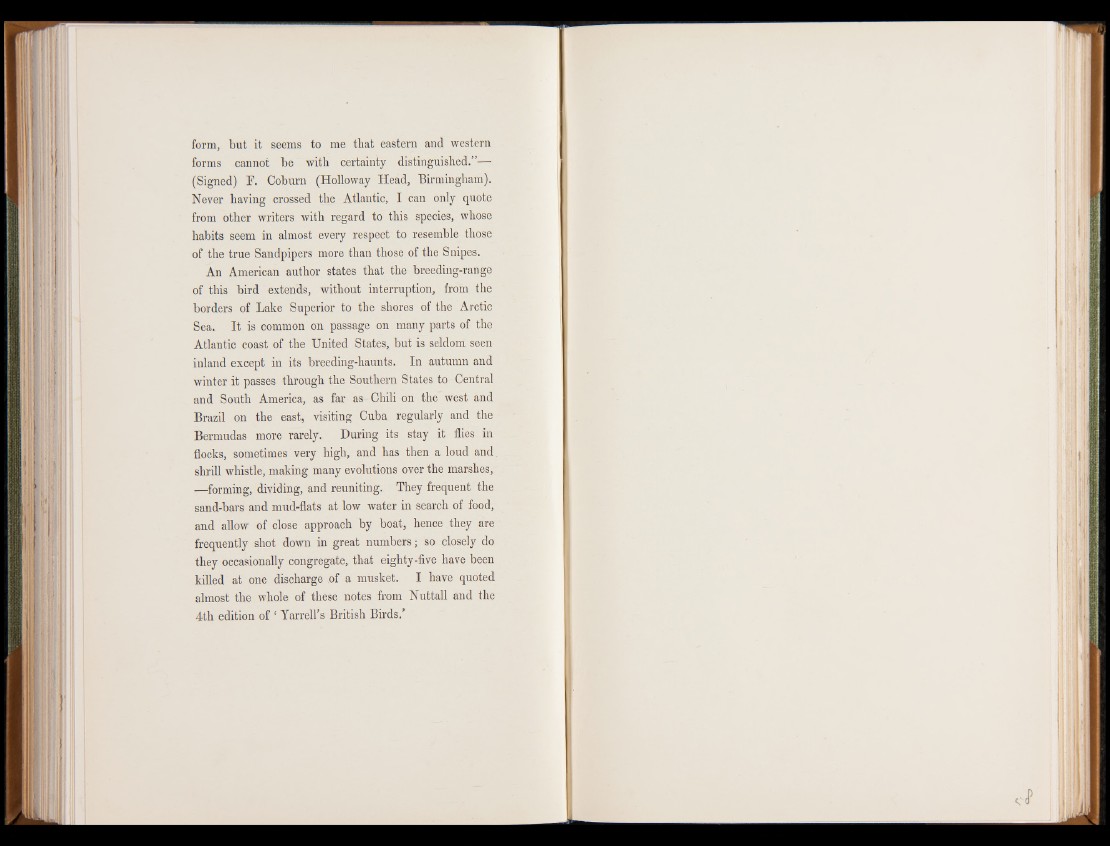
form, but it seems to me that eastern and western
forms cannot be with certainty distinguished.”—
(Signed) E. Coburn (Holloway Head, Birmingham).
Never having crossed the Atlantic, I can only quote
from other writers with regard to this species, whose
habits seem in almost every respect to resemble those
of the true Sandpipers more than those of the Snipes.
An American author states that the breeding-range
of this bird extends, without interruption, from the
borders of Lake Superior to the shores of the Arctic
Sea. It is common on passage on many parts of the
Atlantic coast of the United States, but is seldom seen
inland except in its breeding-haunts. In autumn and
winter it passes through the Southern States to Central
and South America, as far as Chili on the west and
Brazil on the east, visiting Cuba regularly and the
Bermudas more rarely. During its stay it flies in
flocks, sometimes very high, and has then a loud and,
shrill whistle, making many evolutions over the marshes,
—forming, dividing, and reuniting. They frequent the
sand-bars and mud-flats at low water in search of food,
and allow of close approach by boat, hence they are
frequently shot down in great numbers; so closely do
they occasionally congregate, that eighty-five have been
killed at one discharge of a musket. I have quoted
almost the whole of these notes from Nuttall and the
4th edition of ‘ Yarrell’s British Birds.’